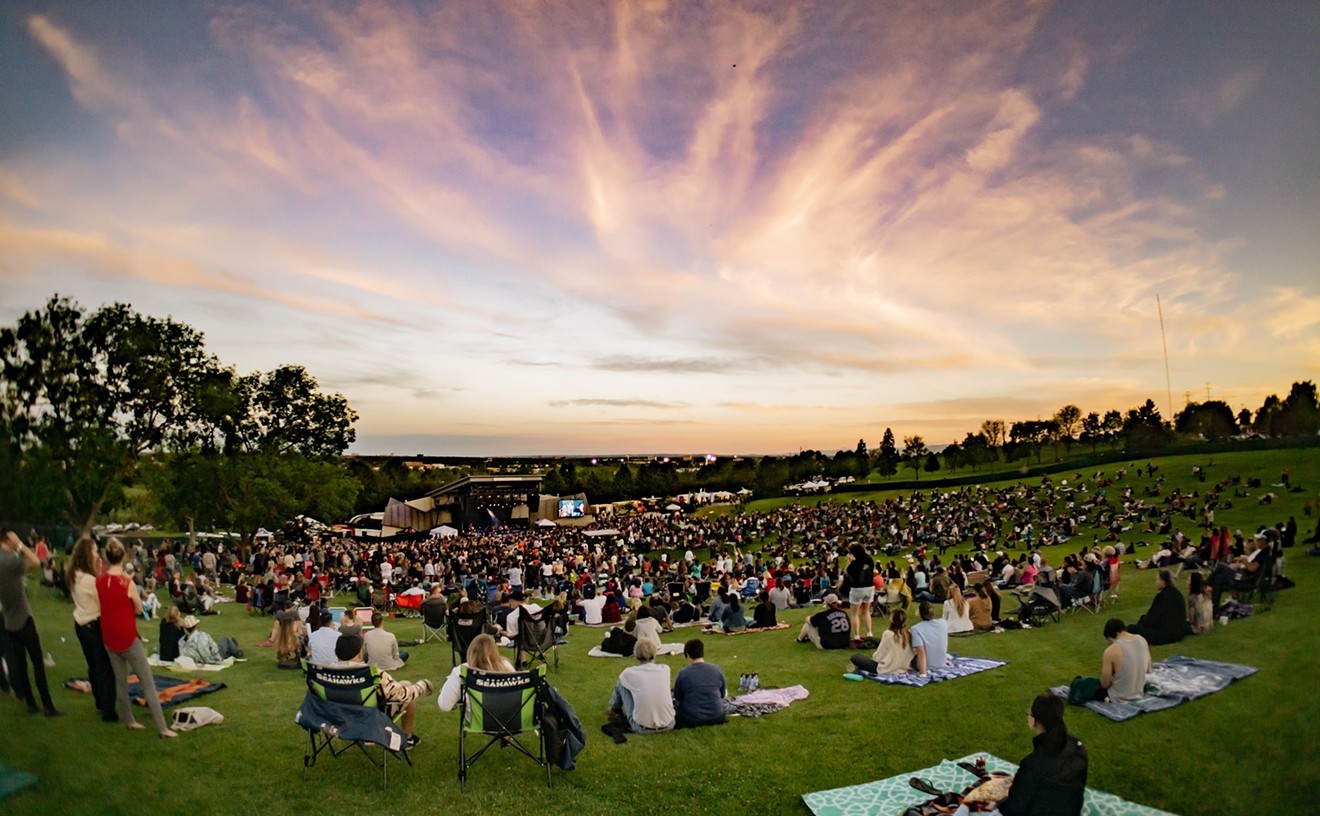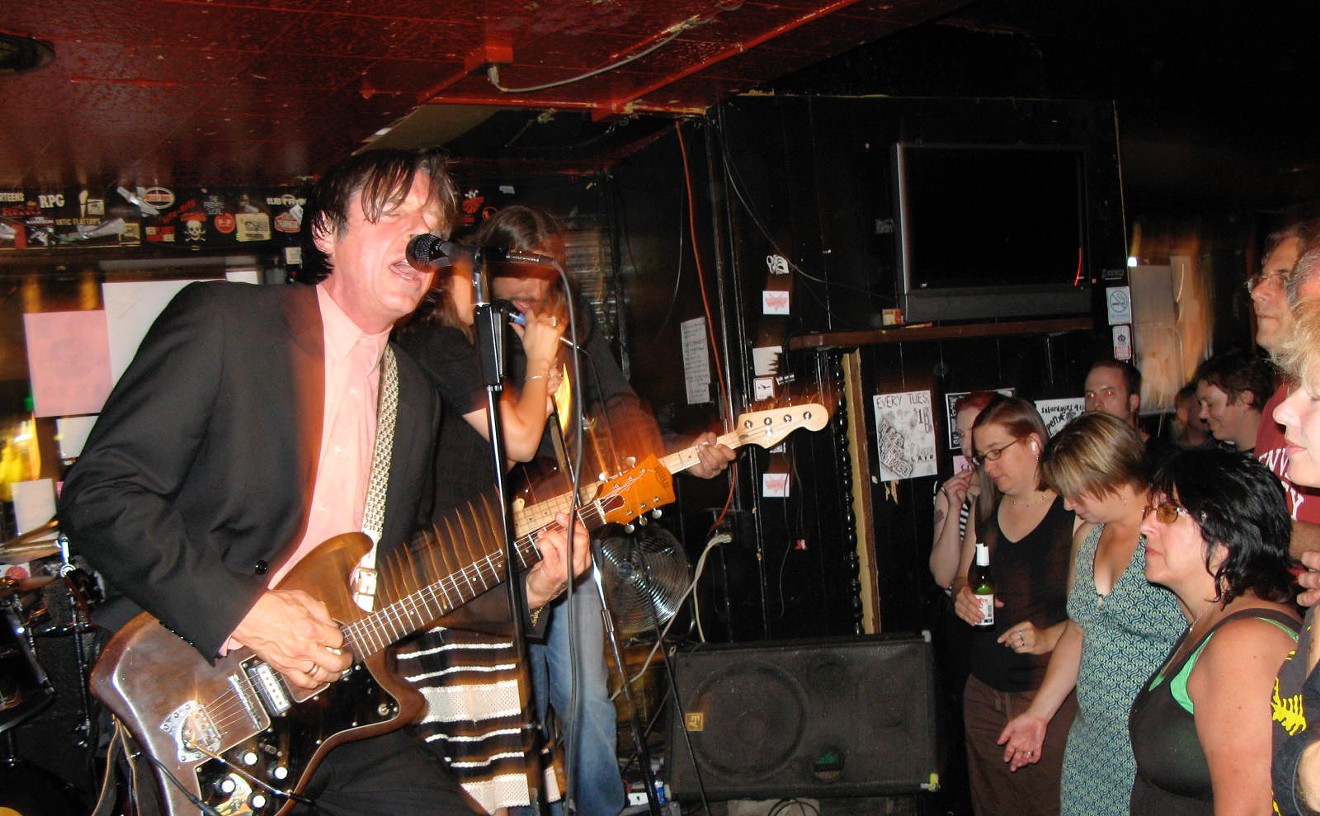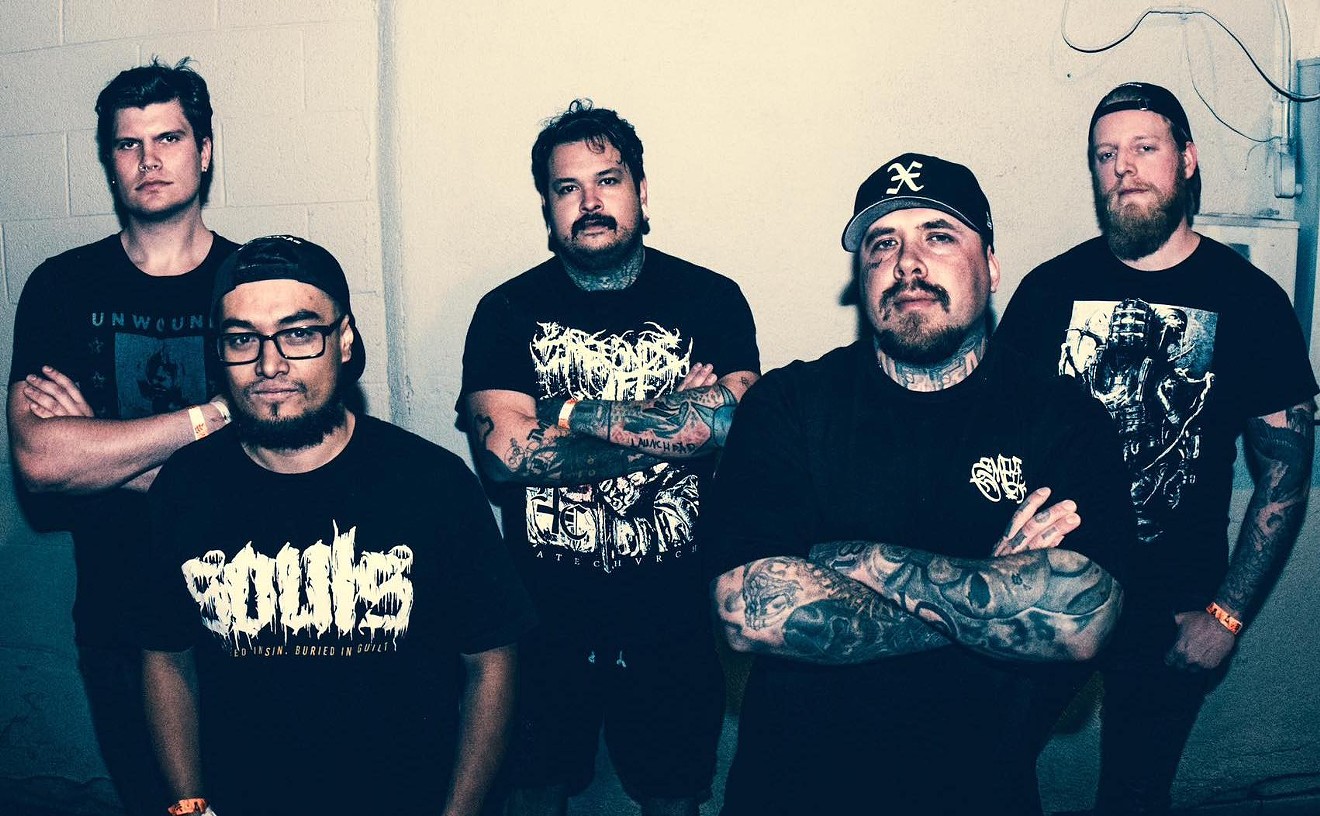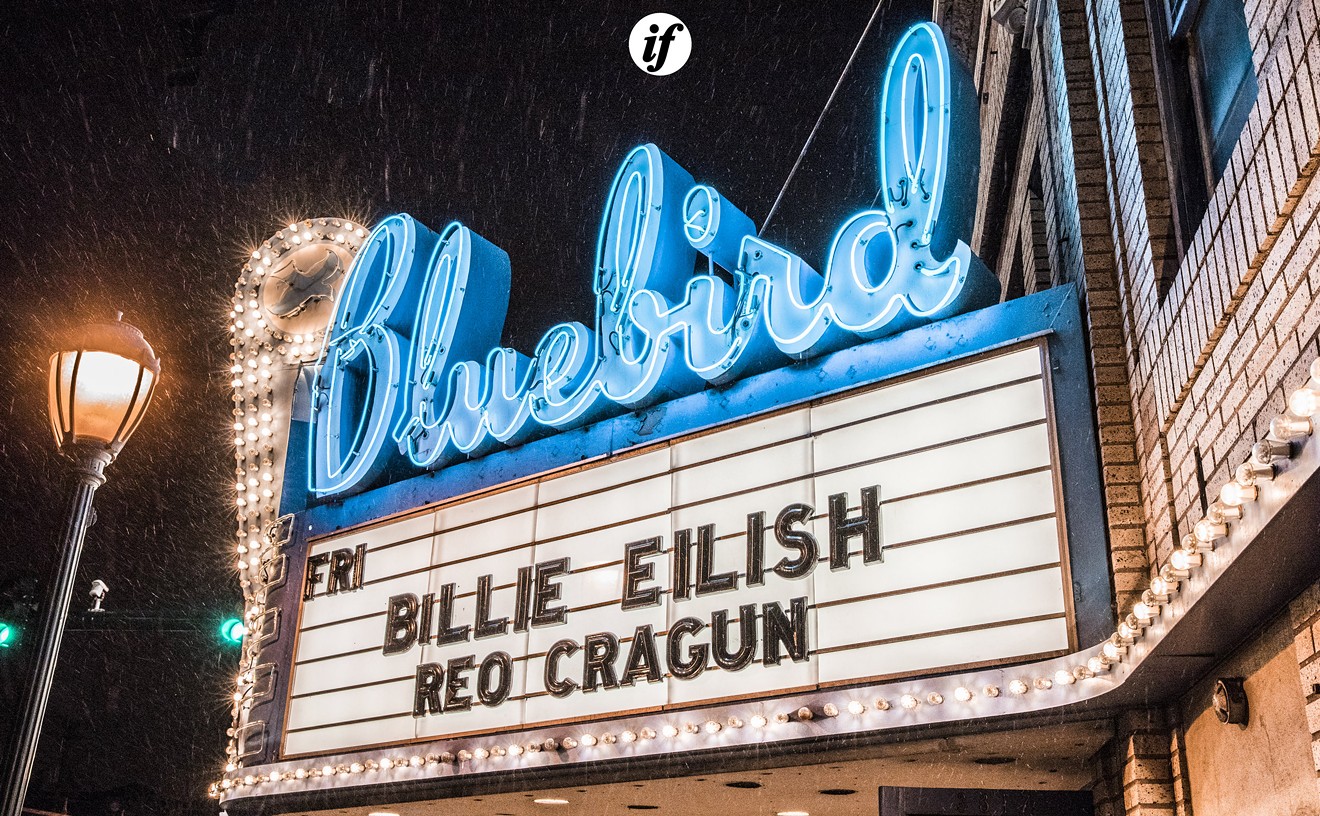Over the next few weeks, Backbeat will finish our countdown of the twenty most fabled moments in Denver music history. Today, we take a look back at Barry Fey's Denver Pop Festival, a three-night musical event in June 1969 that culminated with the final appearance of the Jimi Hendrix Experience, the outfit led by the legendary guitarist, who would have been seventy years old today.
By Mark Sanders and Dave Herrera
The mere fact that the Jimi Hendrix Experience played in Denver is itself remarkable -- even more so when you take note of the fact that the band essentially broke up at Mile High Stadium, just after playing the Denver Pop Festival on Sunday, June 29, 1969. There was also clash between the crowd and the police that involved tear gas at the three-night festival, which was a landmark event for then burgeoning promoter Barry Fey, who was only doing one show a month at the time.
See also: - #9: Pantera fans riot at Mammoth Event Center, 1997 - #10: Nirvana's first post-Nevermind show here, 1991 - #11: Bob Dylan crashed in the Mile High City, 1960 - Twenty Fabled moments archive - The Jimi Hendrix Experience's Are You Experienced turns 45 - Top Five Excellent Jimi Hendrix Songs You Might Not Know - Jimi Hendrix's 70th Birthday: Thirteen revealing quotes from the man himself - Hendrix at 70: Jimi was headed for jazz fusion and hip-hop, not Earth, Wind & Fire
The festival, which drew a crowd of 62,000 at Mile High Stadium over three nights, featured seventeen acts, among them, Frank Zappa and the Mothers of Invention, Three Dog Night, Poco, Creedence Clearwater Revival, Joe Cocker, Tim Buckley and the Jimi Hendrix Experience. Astonishingly, you could see all of those acts for a mere six dollars per night or fifteen dollars for all three nights. Pulling it together was a monumental task for Fey and company, and at one point the whole thing even appeared to be in peril because of the elements.
"Starting in May, we had a godawful rainy season, the worst I'd ever seen," Fey recalls. "If I remember, someone died on Alameda -- west Alameda, in the gutter -- there was so much rain. It rained and poured and poured, and when I got up Friday morning, the radio said there was a zero percent today, a zero percent tomorrow and five percent on Sunday. And Monday it poured. That could've been the shortest career. I would've been out of business."
Indeed. There was quite a bit of money on the line, according to Fey, who says his initial budget was a hundred-thousand dollars but soon ballooned to three-hundred thousand. "We borrowed on everything we had, cars, and everybody that worked for me borrowed," he remembers. "We ended up doing two-hundred and sixty thousand. Hendrix alone was fifty grand. Things just got way out of hand."
While there were a bunch of stellar acts that night, the Jimi Hendrix Experience was probably the most noteworthy. The legendary guitarist and his British bandmates, bassist Noel Redding and drummer Mitch Mitchell, made for an odd combo -- a wise-talking kid from Seattle who played the hell out of an electric guitar and two skinny Brits with funny haircuts backing him. The "power trio" setup was still rather unique at the time, as was Hendrix's wah-wah-inflected fretwork and his mix of sex-heavy lyrics and New Age mysticism. The band formed in 1966 but was not introduced to American audiences until the 1967 Monterey Pop Festival, a landmark rock event that also put the Who, Janis Joplin and Otis Redding in front of the largest American crowds they'd seen to date.
By the time the Experience showed up in Denver, they had been touring and recording nonstop for three years. The Sunday, June 29 show at Mile High was the last of the band's American tour, and feelings were raw. Add to this the mounting tension between the supposed gate-crashers (supposed, because it turns out the rabblerousers weren't actually interested in seeing the show -- more on that in a minute) and the police who resorted to employing tear gas in an effort to control the crowd.
"I had seen tear gas before in the Marine Corps," says Fey, recalling the clash on the night before Hendrix's performance on Sunday evening. "Zephyr was on stage Saturday. All of the sudden, people started coming... See we were lined up on - the stage was on the first base line facing West. And people started coming on the field with their eyes, and then I smelled it. I was inside. I didn't know what was going on outside. So Chip [Monck, who served as emcee at Woodstock a few months later] and I took a turn at the mike saying, 'Please do not rub your eyes. Get something wet and put it on your eyes.' And we pretty well had it - not under control, but it was sporadic firing all Saturday night."
In response to Saturday's commotion, Fey met with police officials, including the then Chief -- who coincidently happened to be the uncle of Bill Thompson, manager of the Airplane -- to try and formulate a plan for keeping the peace the next night.
"I said, 'Listen, we've already got enough tickets sold. I don't want any trouble," says Fey, recalling the solution he proposed. "Tomorrow night at six o'clock when the music starts, you open the doors, let everybody in.' I assumed it was gate-crashers against the police. They said, 'Okay.' The chief was there, and he said, 'Okay, we'll do it.' So Sunday, Leslie and I get there about 4:30 and Stan Kayou [the officer in charge] comes up to me and says, 'We're not going to let these fucking punks push us around. We're going to make a stand.' After we agreed to open the doors, they changed their minds, and you can't fight the police.
"Leslie and I came up with an idea About five thirty, the lines were already forming outside [with] cops, kids," Fey continues. "We went out with literally thousands of tickets, and Leslie had the same experience I did. Went up to a kid, 'Here, take a ticket. Go on in.' [He said], 'We don't want a fucking ticket!' I said, 'Beg your pardon?' He said, 'We don't want to see the show. We came to fight the pig.' They were all from California. And so as soon as the music started on Sunday, all the gas and kids up on the third deck throwing rocks down on the cops. I remember Joe Cocker was in the north bathroom in the fetal position. He was scared to death. 'Is this what America's all about?' I explained, 'No, we'll be alright.' I just couldn't wait for it to be over. I was miserable -- as well as we were doing and the beautiful music, I hated it.
"There's a lot of stories, but the worst one is Hendrix," Fey goes on. "I had Jimi September 1, 1968 at Red Rocks. We had become such good friends in a year or so. I mean, I just loved him. He was such a great guy. And then nine months later at the Denver Pop Festival, I get to talk to Noel and Mitch, and they said, 'We're not going to play with him anymore, Barry.' I said, 'What are you talking about?' They said, 'We can't stand him. Since you've seen us last, he's discovered heroin, and you can't deal with him.' And then he showed up, and he hardly knew who I was. And that was the last appearance of the Jimi Hendrix Experience, June 29, 1969. First time I ever heard him do the Star Spangled Banner.
That night, the band played what would later become FM classic rock station staples: "Voodoo Chile (Slight Return)," "Purple Haze" and "Fire," plus a pre-Woodstock rendition of "A Star Spangled Banner," and the crowd went wild. After the Denver show, Redding headed back to London and Hendrix ended up hiring a revolving cast of musicians to back him. Two percussionists, two drummers, a new bassist and second guitarist would be with Hendrix at his famed Woodstock performance. The band lineups would continue changing over the next few months, with Hendrix's behavior becoming increasingly erratic, despite playing very high-profile gigs.
There were rumors of the Experience regrouping, then those were deemed false. There was recording, but the album (First Rays of the New Rising Sun) languished and went unfinished. There was a tour, but it was also a rough-going affair, with canceled gigs and bassist Cox abandoning the band entirely. By the end of September, 1970 -- barely a year after playing Denver -- Hendrix was found dead in a London apartment at the age of 27.
Follow @Westword_Music










